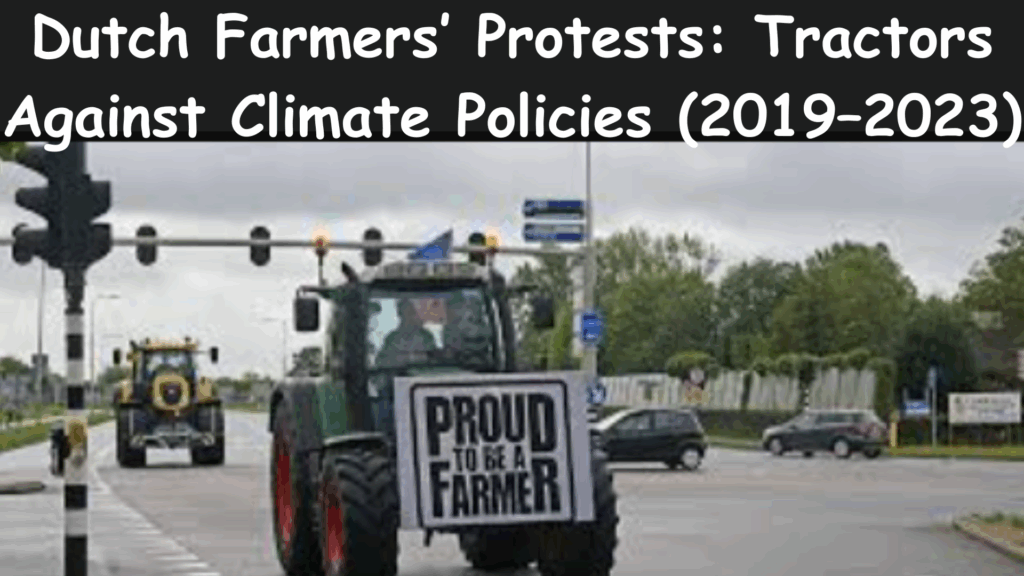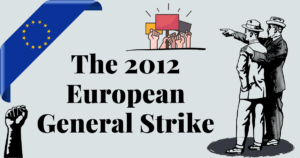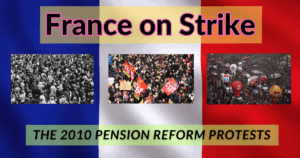Here we are going to cover essential updates about the Dutch Farmers’ Protests: Tractors Against Climate Policies (2019–2023); read and know the insights.
Dutch Farmers’ Protests: Tractors Against Climate Policies (2019–2023)
From 2019 to 2023, the Netherlands hosted a number of large-scale farmer-led protests that raised awareness of the country’s environmental policies worldwide. The main source of the dissatisfaction was the Dutch government’s plan to drastically reduce nitrogen emissions.
Between the said period, Dutch farmers protested frequently, blocking highways with tractors, to express their disapproval of government initiatives aimed at reducing nitrogen emissions and livestock numbers. Raising public awareness of the impact these policies have on farmers’ livelihoods and the potential for food shortages was the aim of the demonstrations and blockades. In this article we are going to discuss various aspects of the Dutch Farmers’ Protests.
Cause of Farmers’ Protests
Nitrogen pollution has long been a problem in the Netherlands, one of the most populous and agriculturally intensive countries in Europe. The release of nitrogen oxides and ammonia into the air and water from synthetic fertilizers and animal manure threatens biodiversity in protected Natura 2000 areas.

A court ruling in 2019 that compelled the government to address nitrogen emissions, which immediately affected cattle producers, was one of the primary reasons behind the Dutch farmers’ protests. Since agriculture was supposed to bear a disproportionate amount of the cost compared to industries like construction or aviation, farmers saw these measures as a direct threat to their way of life.
Farmers bemoaned what they saw as onerous government regulations and a lack of support for the agricultural sector. Many farmers also felt that they were not receiving enough respect or attention from the Dutch government and media.
More Information: Get Here
Course of Dutch Farmers’ Protests
On October 1, 2019, Dutch farmers brought their tractors to The Hague as a protest against the perceived threat to farming. Nearly 2,200 tractors were involved in the convoy, which caused the longest morning traffic jam in Dutch history. This first demonstration was followed by more.
Protests continued intermittently over the next four years, reaching a peak in 2022 when farmers blocked highways, airports, and food distribution centers. The demonstrations occurred between 2019 and 2023, with some of them occurring in Belgium and Germany, respectively, outside of the Netherlands. Demonstrators gathered outside the homes of officials and dumped feces on the roads during some violent protests.
Within the movement, there were differences. While some backed more radical groups like the Farmers Defence Force, many farmers placed a higher priority on peaceful protest. Additionally, populist and far-right leaders supported the protests, which stoked conspiracy theories and anti-government sentiment.
Consequences of Dutch Farmers’ Protests
The demonstrations had a significant impact on Dutch society, raising public awareness, influencing political discourse, and creating traffic jams. The demonstrations highlighted the tensions between climate change goals, environmental concerns, and the needs of the agriculture sector. Because of the situation, the government and farmers have been in constant communication and have reached agreements regarding the future of Dutch agriculture and the use of nitrogen reduction techniques.
The protests sparked a significant shift in politics. In addition to creating massive traffic jams, the protests garnered media and public attention and aided in the emergence of new political organizations that defend the rights of farmers.
As a political voice for rural communities, agricultural writer Caroline van der Plas co-founded the Farmer–Citizen Movement (BoerBurgerBeweging, or BBB) in 2019. The BBB expanded to become the largest party in the Dutch Senate by 2023 after taking the most seats in each of the twelve provinces during the provincial elections. In this remarkable increase, the general discontent in rural areas and the growing disconnect between rural reality and urban environmental goals were reflected.
Conclusion
The Dutch farmers’ protests came to represent the wider global disputes over climate policy. They highlighted the challenges of implementing rapid environmental improvements in areas that are closely linked to food security, rural economies, and national identity. The movement also stressed the importance of inclusive policymaking that considers the views of those most affected by ecological changes.
The tractor demonstrations’ legacy serves as a potent reminder that while climate action must be ambitious, it must also be equitable, especially as the Netherlands grapples with its nitrogen problem. A Dutch court in January 2025, noting continued ecological harm and a lack of adequate policy action, ordered the government to complete its nitrogen reduction objectives by 2030 or risk a €10 million punishment to Greenpeace.
Thanks a lot for reading this post.






